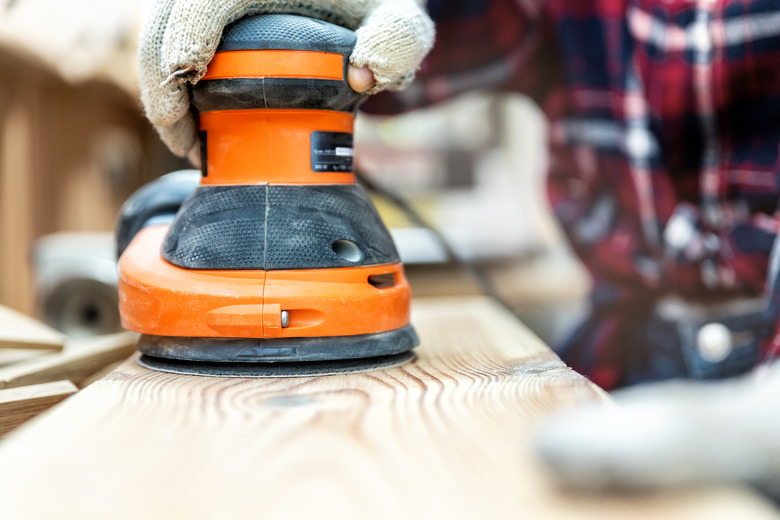How To Put Sandpaper On An Orbital Sander
Of all the tools used for sanding, the orbital sander is probably the most popular, and it's definitely the easiest. Actually, there are two types of orbital sanders, the plain orbital sander and the random orbital sander, and not only do they work differently but they also take different kinds of sandpaper, and you load them differently.
The orbital sander has been around longer, and if you're like most woodworkers and finishers, you've used one. After having tried a random orbital sander, like the DeWalt 6-inch orbital sander (despite the name, it's a random orbital sander), you'll definitely want to keep one of those in your tool kit as well. It's a more powerful sander that covers a wider area in a single pass, leaves a cleaner surface, and is easier to load. It's good to know how to load both types.
Orbital vs. Random Orbital
Orbital vs. Random Orbital
Orbital sanders are often referred to as sheet sanders because they work with sheets of sandpaper — actually half or quarter sheets. When an orbital sander is running, the base oscillates in a circular motion, which allows the abrasive paper to wear the surface without any effort on the part of the user other than that needed to keep it in place. It's effective, but one of its main drawbacks is that it leaves tiny, circular impressions in the wood that you have to put extra effort into removing if you want a truly smooth surface.
The main improvement introduced with the random orbital sander is that the base spins as it oscillates, thus eliminating the squiggles. To make this possible, the base of the sander is round instead of square or rectangular, and that means you can't simply load it with a sheet of sandpaper. Instead, you have to load precut sanding discs that are sized to exactly fit the base.
Loading an Orbital Sander
Loading an Orbital Sander
An orbital sander has a base approximately as wide as half a standard sheet of sandpaper. Half-sheet sanders have rectangular bases that are approximately as long as a full sheet, so you can get two reloads from one sheet of sandpaper. The bases of quarter-sheet sanders, or palm sanders, are about half as long as a full sheet, meaning you can get four reloads from a single sheet of sandpaper. You have to fold over the sandpaper and tear it to the proper size before loading it onto the sander.
On either end of the sander base is a clip to hold the paper, and it's either spring-loaded or connected to a lever that clamps to the side of the base. You simply insert one end of the paper into one clamp, stretch the paper over the base, and insert the other end into the other clip. To get the paper tight, you often have to fold the ends over by about 1/4 inch because the base is slightly shorter than the paper. If you leave the paper loose, it will tear in short order while you're working.
Loading a Random Orbital Sander
Loading a Random Orbital Sander
The base of a random orbital sander is textured, and the discs have a Velcrolike coating that sticks to it. This arrangement makes loading the paper very easy. Simply lay the disc face down on a table, position the base of the sander over it, align the base with the edges of the disc, set the sander onto the disc, and press down. The disc is now firmly attached, but when you need to change it, it will come off when you pull on it.
When you're changing the disc on a random orbital sander, it's a good idea to brush sanding dust off the base because it can interfere with adhesion. It's also important to align the disc exactly with the base. You don't want a piece of the sandpaper hanging off the base because it might cut into surfaces perpendicular to the one you're sanding.
